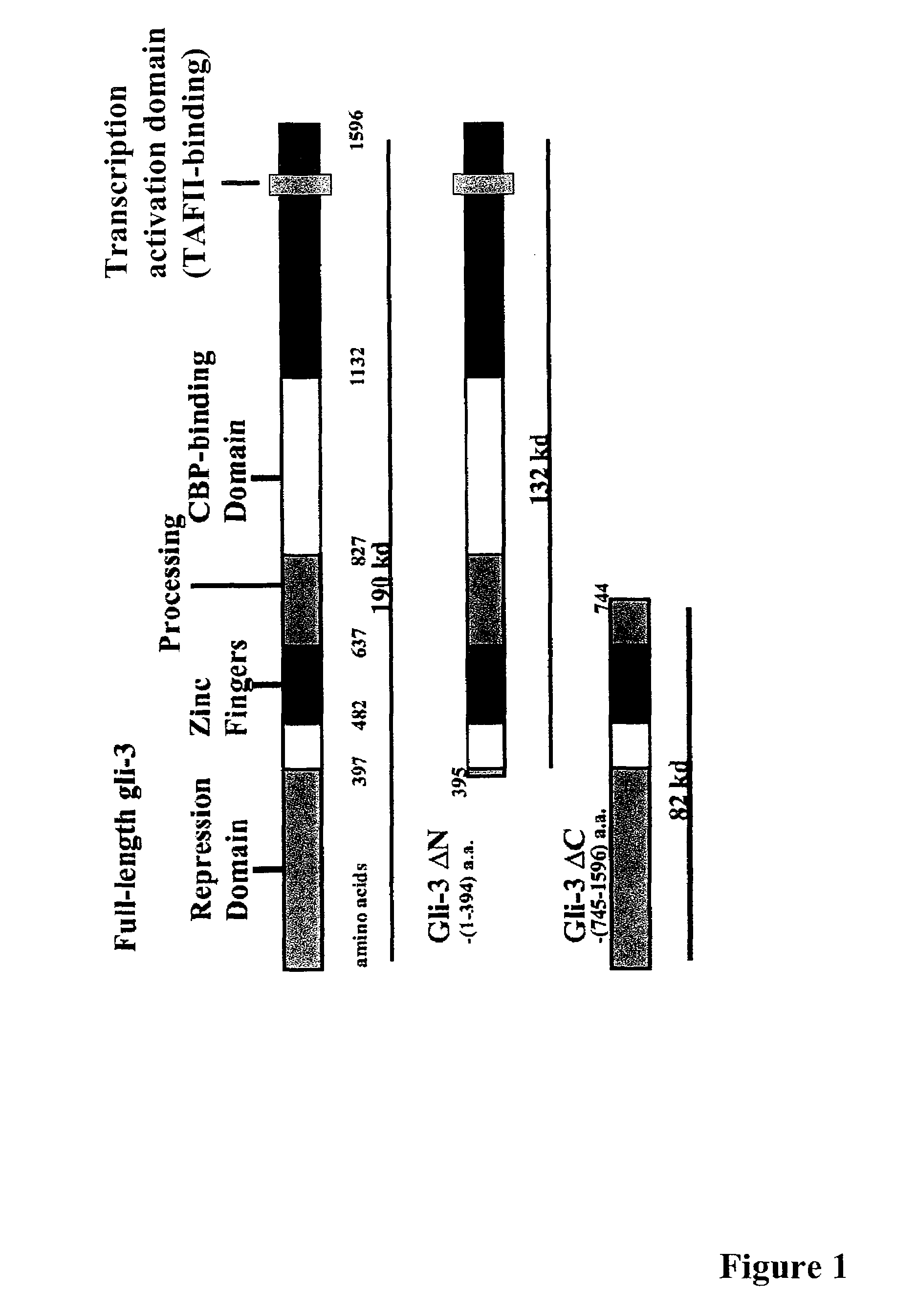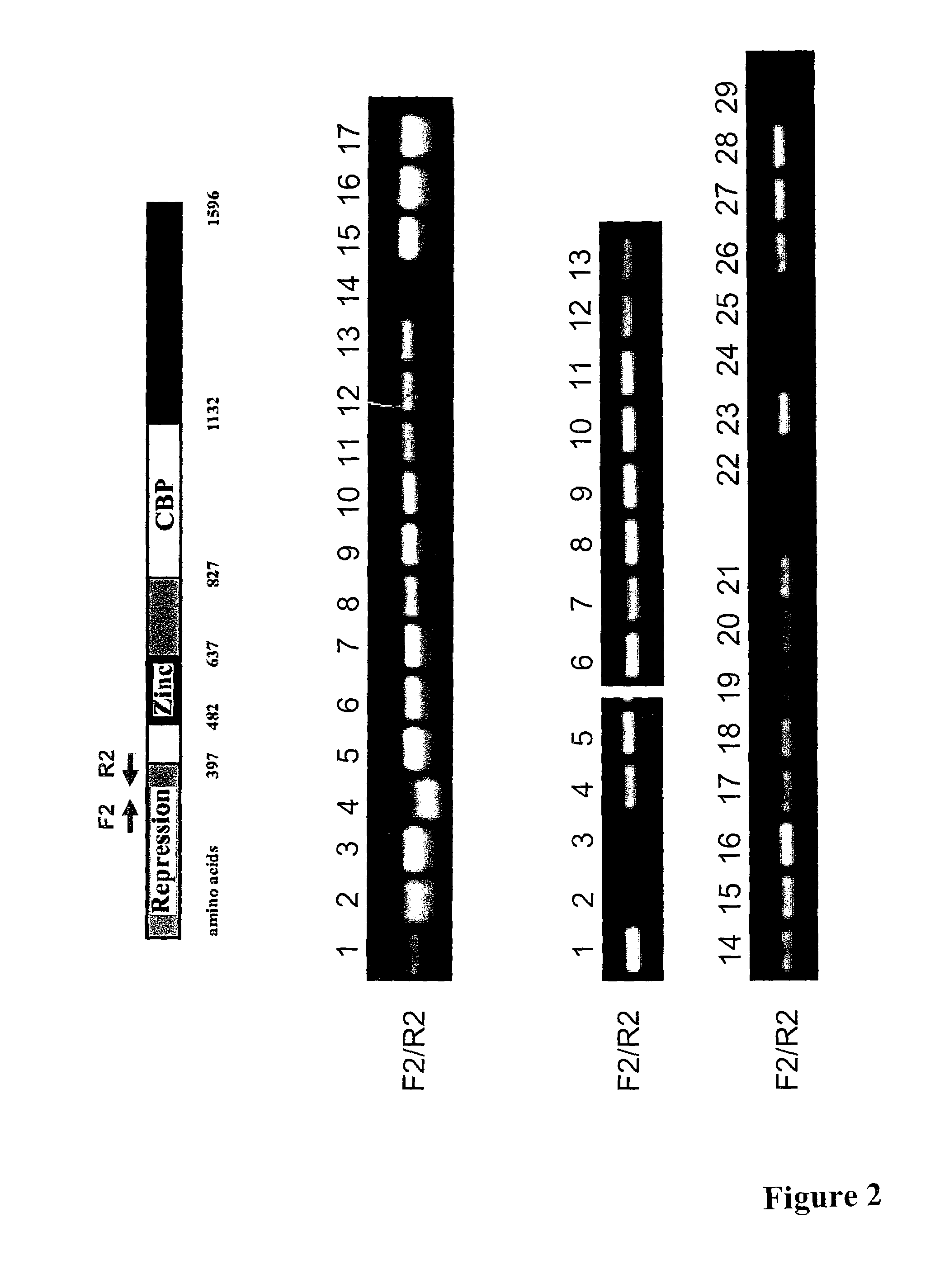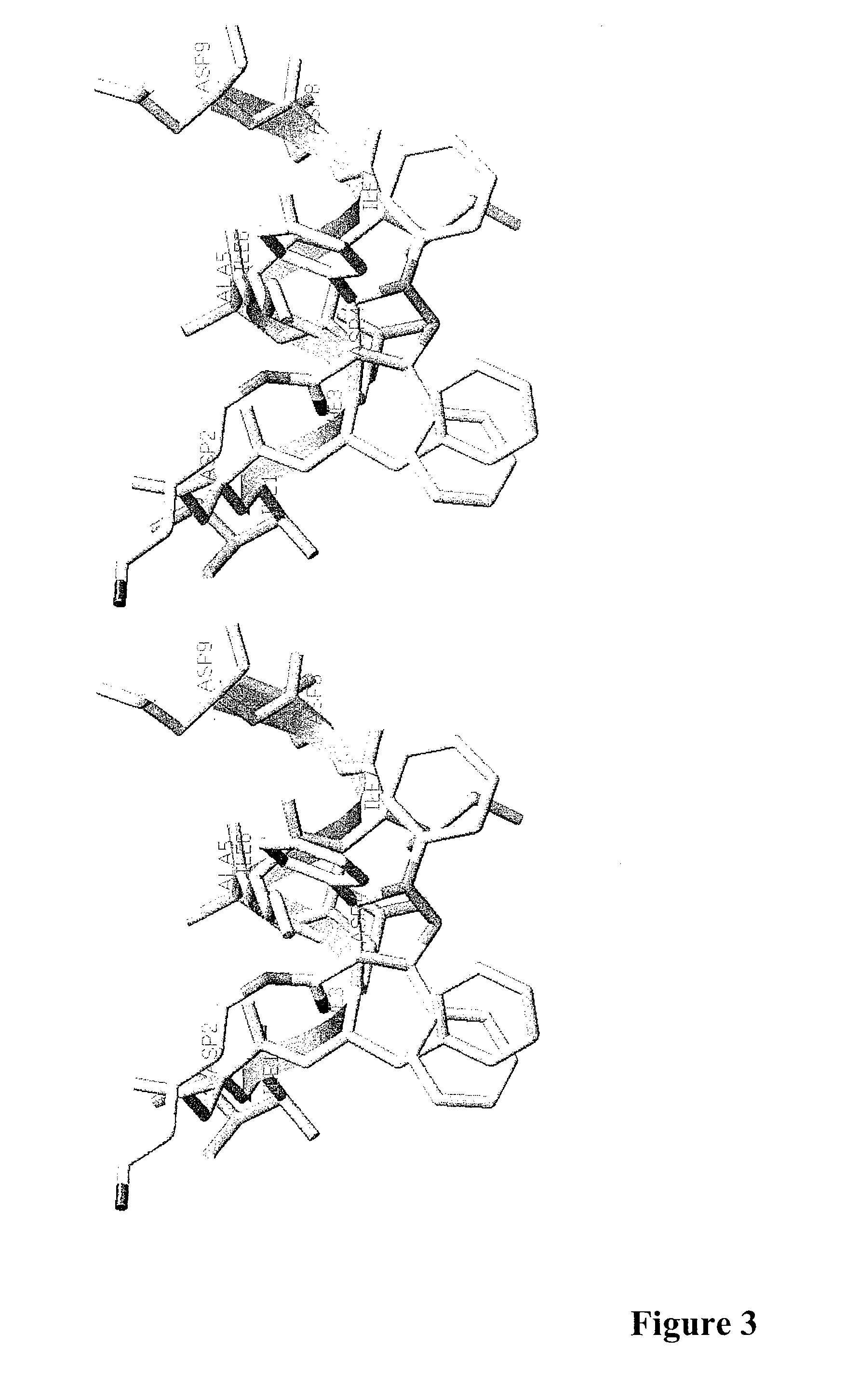Targeting GLI proteins in human cancer by small molecules
a technology of gli protein and human cancer, which is applied in the field of inhibiting tumor growth and tumor survival, can solve the problems of advanced disease, limited understanding of the molecular mechanisms and tumorigenic programs that are activated in response to hh-signaling and gli-activity in human cancer, and disadvantages in approaches, so as to inhibit the activity of a gli protein, inhibit the expression of a gene, and inhibit the signaling of a cell by a gli protein
- Summary
- Abstract
- Description
- Claims
- Application Information
AI Technical Summary
Benefits of technology
Problems solved by technology
Method used
Image
Examples
example 1
General Methods
[0274]A. Cell Lines
[0275]Most human cell lines were obtained from the American Type Culture Collection (A.T.C.C.; Manassas, Va.). These cell lines include: non-small cell lung cancer (NSCLC) cells A549, H1703, H460, H358, H322, H838, H1299, H1650, H1975, and A427; mesothelioma cells 211H, H513, H2052, H28, and Met5A; colon cancer cells SW480, HCT116, HT29, Lovo, and CaCO2; breast cancer cells MCF7, HuL100, SKBR-3 and BT474; sarcoma MG-63, MNNG, A-204, and SJSA-1; melanoma cells LOX, FEM, FEMX, A375, G361, SK-Mel-2, SK-Mel-5, SK-Mel-28, and Malme-3M; human normal skin fibroblast cell, Malme-3; renal cell carcinoma cells 786-O, Caki, 769-P, A704, and OMRC3; prostate cancer cell line LnCAP; glioma cell line U87; hepatocellular carcinoma cells HepG2 and SK-Hep-1; normal muscle cell lines; normal renal cell line HRE152 and HK-2. Other human mesothelioma cancer cell lines H290 and MS-1 were obtained from the National Institute of Health (NIH, Frederick, Md.), and LRK1A and ...
example 2
Mimicking the Peptide FDAII of the Gli3 Transcription Activation Domain
[0303]In order to mimic the FDAII motif of the transcriptional activation domain of GLI3 by small molecules the 3D structure of the FDAII was modeled. As suggested by Yoon et al. (1998, J Biol Chem 273:3496-3501), the FVAIL motif within the GLI1 polypeptide resulted in an α-helix structure. It was plausible to also model an α-helical structure for the FDAII motif of the GLI3 polypeptide. Thus, an α-helical structure of the FDAII motif of the GLI3 polypeptide was generated and rational chemical design was employed to design small molecule compounds mimicking the structure of this motif. Small molecule compounds comprising a pyrazoline structure were designed. FIG. 3 shows a RMS overlay between the small molecule compound FN1-5 (described herein) and the FDAII motif of the GLI3 polypeptide modeled as an α-helix.
example 3
Preparation of Small Molecule Compounds
a) Preparation of ethyl 1,3,5-triphenyl-4,5-dihydropyrazole-4-carboxylate (FN1-1)
[0304]
[0305]A mixture of ethyl cinnamate (7, 2.55 g), benzaldehyde phenylhydrazone (2, 4.21 g), chloramine-T trihydrate (6.45 g), and methanol (45 mL) were heated under refluxing for 22 hours. The reaction mixture was diluted with 50% ethyl acetate in n-hexanes (400 mL), filtered, and evaporated. The residue was purified by column chromatography (silica gel 200 g, eluent: 0 to 10% ethyl acetate gradient in hexanes) and evaporated to give FN1-1 (8, 1.25 g) as colorless crystal. 1H NMR (CDCl3, 400 MHz) δ 7.66-7.64 (m, 1H), 7.46-7.22 (m, 13H), 6.88 (t, J=7.2 Hz, 1H), 4.81 (d, J=4.0 Hz, 1H), 4.70 (d, J=4.0 Hz, 1H), 4.07 (quartet, J=7.2 Hz, 2H), 0.97 (t, J=7.2 Hz, 3H). MS: 371.9 (M+H), 325.5, 297.5.
b) Preparation of 1,3,5-Triphenyl-4,5-dihydropyrazole-4-carboxylic acid (FN1-2)
[0306]A mixture of FN1-1 (53 mg), methanol (0.5 mL), 1,4-dioxane (0.5 mL), and 10% (w / v) sodium...
PUM
| Property | Measurement | Unit |
|---|---|---|
| weight | aaaaa | aaaaa |
| diameter | aaaaa | aaaaa |
| temperature | aaaaa | aaaaa |
Abstract
Description
Claims
Application Information
 Login to View More
Login to View More - R&D
- Intellectual Property
- Life Sciences
- Materials
- Tech Scout
- Unparalleled Data Quality
- Higher Quality Content
- 60% Fewer Hallucinations
Browse by: Latest US Patents, China's latest patents, Technical Efficacy Thesaurus, Application Domain, Technology Topic, Popular Technical Reports.
© 2025 PatSnap. All rights reserved.Legal|Privacy policy|Modern Slavery Act Transparency Statement|Sitemap|About US| Contact US: help@patsnap.com



